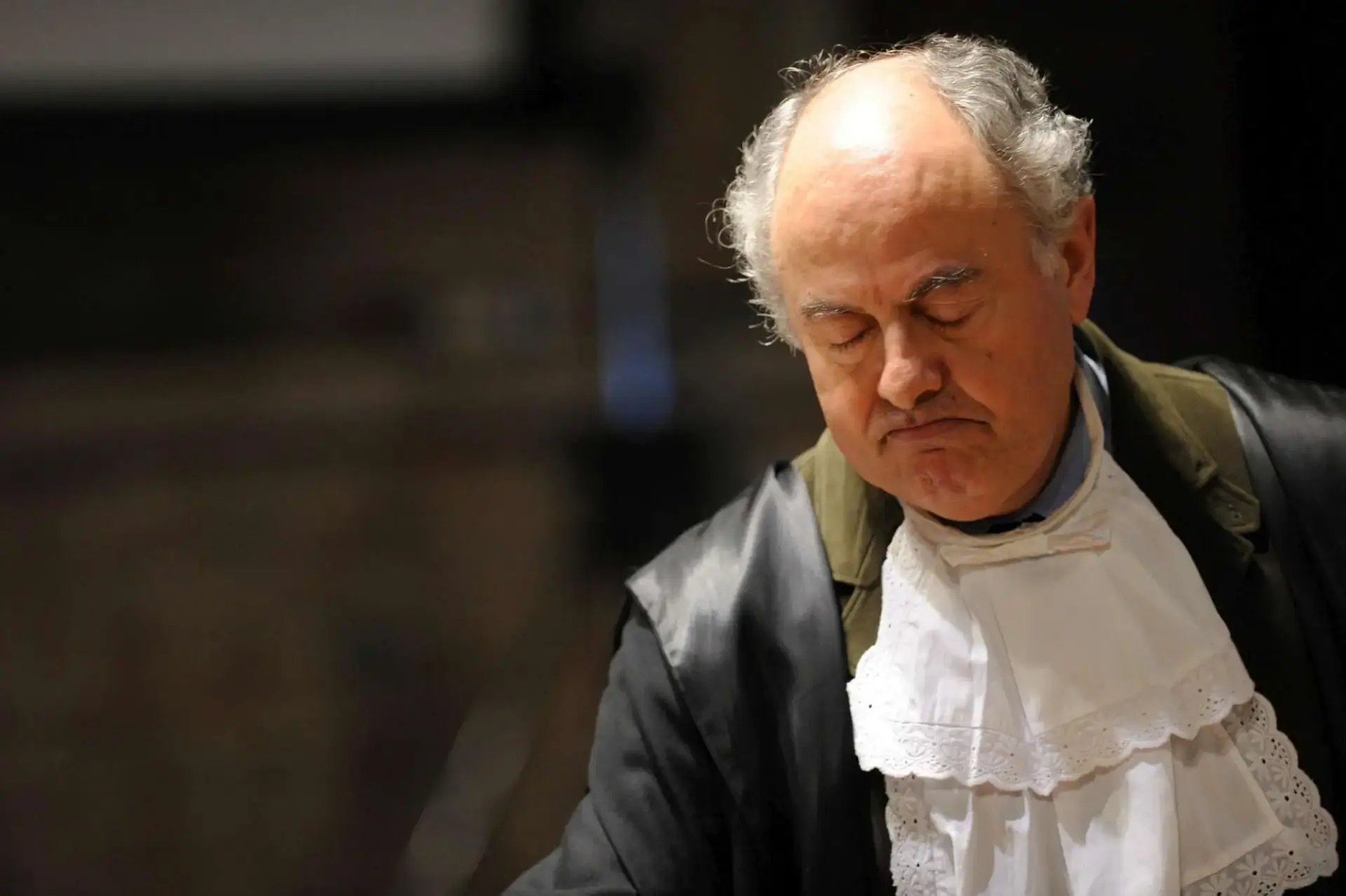AMANDA KNOX Explained: A Testament to Human Weakness

Logically, it would make sense to start with the details of the brutal murder of British student Meredith Kercher—it seems obvious. But the thing is—though it may sound callous—Meredith (and her undeniable tragedy) is practically absent here, and that’s intentional. Even Amanda Knox is not entirely the protagonist of the film that bears her name. This is primarily an attempt to understand a process in which ambitions, beliefs, illusions, and fears not only triumph over facts and logic but render them completely meaningless.
The crime scene—a cozy student room in a charming duplex on Via Pergola in Perugia, Italy—elicits horror. Chaos, blood on the wall, blood on the bed and floor, a naked body carelessly covered with a duvet. At the very entrance, like an exclamation mark—a white bra with a torn clasp. A young girl, slaughtered, her throat slit. Just a week earlier, she had been making plans and looking to the future with optimism. Meredith Kercher. The victim. Dead. Amanda Knox
Amanda Knox: Different Than You Know Her
Amanda Knox carefully distances herself from the image of the promiscuous Foxy Knoxy, which we will return to later. This is the introduction to the documentary, and it’s immediately apparent that this is a deliberate move, setting the stage. Amanda—a face devoid of makeup. She looks older than her actual age. A dull-colored T-shirt. Folded hands without adornments. Amanda behind the wheel of a car, preparing a homemade meal, sipping wine, stroking a cat. She is painfully ordinary. Detached. She looks at the photos and footage of that other version of herself—the twenty-year-old about to embark on a study abroad program in Italy—with a mix of condescension and pity. She speaks of her as if talking about a deceased relative: I was—I wanted—I could—I thought.

In Italy, Amanda is thrilled by the newfound freedom and attention. A waitress at a pub, pampered as the attractive American girl. Free from all rules and restrictions in the lovely house on Via Pergola, which she shares with two Italian women and a British peer, Meredith. The world is beautiful, and love exists in the form of a handsome Italian, Raffaele. After spending just a few hours together, the two become inseparable.
Nick Pisa: Behind The Media Circus
Nick Pisa, a journalist for the Daily Mail, was sent to Perugia due to his knowledge of Italian, and in a way, he is even honest. He openly admits that a hot topic is not worth verifying or fact-checking because that risks losing a sensational story. He is unapologetic about his sole motivation: the desire to see his name on the front page of the newspaper (finally). Nor does he hesitate to reveal how the press manipulated Amanda’s image to fuel the media frenzy.

A few cleverly selected quotes, photos, and videos from MySpace, and what might otherwise look like the harmless antics of a carefree teenager turns into a legend. A little bit of fact, a few sentences taken out of context, some gossip from the morgue, and the story is ready. In the pages of the press, Amanda transforms into a femme fatale, a promiscuous manipulator, a sensual psychopath, a nymphomaniac without a conscience, the organizer of orgies, and a she-devil who tempted dozens of men into sin.
Amanda herself, with her online pseudonym Foxy Knoxy, cuddling up to Raffaele and kissing him near the crime scene, does little to help her own case. She makes no effort to inspire sympathy, compassion, or doubt. She is dismissive. Maybe slightly shocked but certainly not grieving the death of her friend. That the two had known each other for only a few weeks and didn’t spend much time together goes conveniently unmentioned. Innocent Meredith, defending her purity, opposed Amanda’s depraved propositions, and so she had to die. End of story. Orgies, crime, and blood—a sensational story to be milked for all it’s worth.

Nick Pisa is uninterested in discussing journalistic ethics. Instead, he cynically adds that where there’s demand, there’s supply, and outraged moralists are the same people who eagerly scoured the internet each morning for juicy tidbits. He doesn’t feel guilty. What was I supposed to do? he asks, with genuine surprise. Verify every fact individually?
Giuliano Mignini: Outshining Sherlock Holmes
Today, the procedural errors and amateurishness of the Italian police investigation are hotly debated online. But in 2007, when Meredith’s body was still warm, and Amanda and Raffaele were public enemies number one, the situation looked very different. Action had to be swift, effective, and reassuring to citizens that they were perfectly safe. And since the criminal duo practically handed themselves over, what more could one want?
The film doesn’t delve deeply into negligence and errors. As with Nick Pisa, Raffaele, and Amanda herself, the camera focuses on the individual—prosecutor Giuliano Mignini. From the outset, Mignini informs viewers that he is a practicing Catholic, as if this has any bearing on his professionalism. He then, without much prompting, begins his private show, which becomes increasingly absurd because it’s not what one expects from a representative of law and order.

Mignini candidly admits that he enjoys reading crime novels and playing a bit of a detective, like Sherlock Holmes. His primary evidence against Amanda is the belief that a man would never cover the body of a murdered person with a duvet. It had to be a woman. Case closed. Because he, Giuliano Mignini, as a bit of a detective, believes so—end of story.
Such views might befit a neighborhood busybody playing amateur sleuth, but they are hardly appropriate for someone committed to working strictly with facts. Alongside his detective streak, Mignini has a flair for drama—he delivers a full show for the camera, recounting in detail how he imagines the murder of Meredith unfolded. This is where the press reports of a botched orgy fueled by drugs, initiated by the amoral nymphomaniac Amanda, originated. Evidence? Zero. But the story fired up imaginations. The prosecutor and the media worked hand-in-hand to create this farce, alternately fueling the flames. And this circus lasted for eight years!
Guilty, Innocent… Does It Even Matter?
Amanda and Raffaele spent a total of four years in prison, but it wasn’t until 2015 that they were fully exonerated. The only person convicted of the crime was Rudy Guede, a 20-year-old drug dealer and the only individual whose presence at the crime scene could be convincingly proven (including bloody handprints). Guede continues to maintain that he was framed because of his skin color.

The issue, however, lies elsewhere, and this is the main message of the documentary, which is not about the case itself but the manipulation surrounding it. This manipulation could easily have turned into a double-edged sword. Knox herself sums it up well in the film’s introduction: Either I’m a psychopath, a wolf in sheep’s clothing—or I’m you.
There are still those who believe Raffaele and Amanda know more than they’ve let on. They point to inconsistencies in their testimonies, mutual blame-shifting, and the eagerness with which Amanda accused her boss, Patrick Lumumba, the owner of a pub. The thing is, they could be right. They could also be wrong. But it’s impossible to determine with full certainty in any direction because the case was handled the way it was.
The true mockery of justice is not that Sollecito and Knox were convicted despite being innocent but rather that if they were guilty, it couldn’t be determined or proven because the case’s main drivers were Nick Pisa’s hunger for fame and prosecutor Giuliano Mignini’s unfulfilled detective fantasies.

